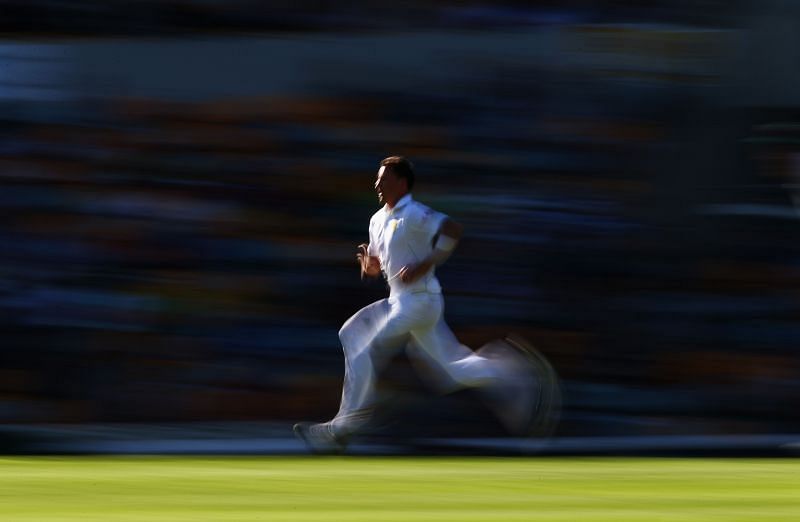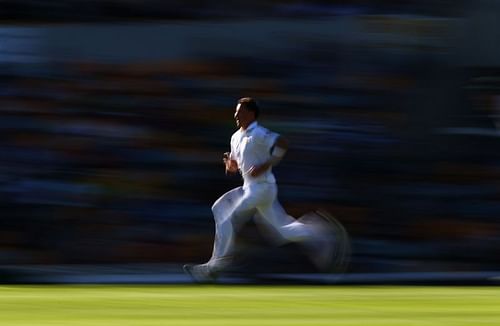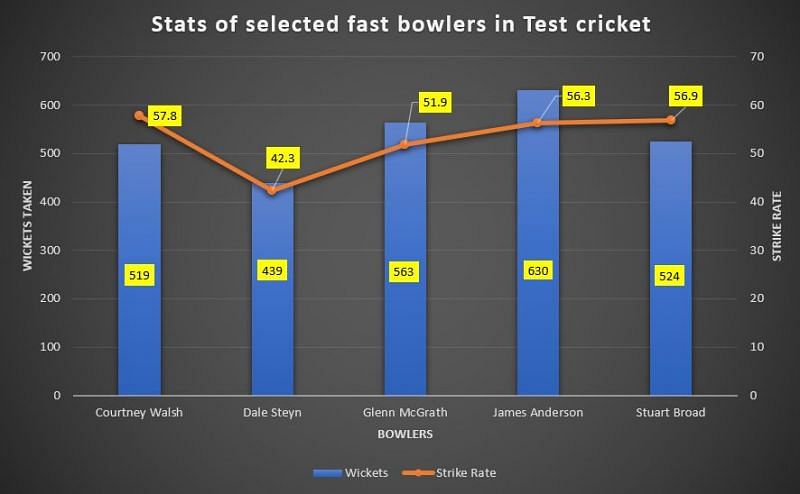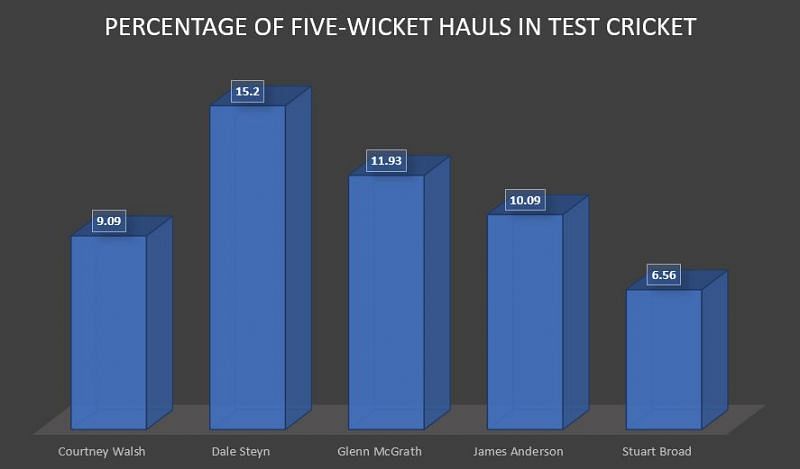
Dale Steyn - A fast bowler like no other

On 8th February 2010, the 1st Test between India and South Africa was finely balanced when Dale Steyn returned to bowl after the Tea interval. Prior to that, the Proteas had amassed 558 on a placid surface at the Vidarbha Cricket Association Stadium in Nagpur.
In reply, India were also doing relatively well, with Virender Sehwag blasting his way to a century. Steyn, though, was doing everything in his power to keep the hosts in check. The fast bowler, before his spell in the 3rd session on Day 3, had accounted for Murali Vijay and Sachin Tendulkar.
More impressively, he had done so in a manner plenty felt was not possible on a pitch that resembled more of the highway the stadium was built on than a traditional Indian track.
With the new ball, in sync with his reputation at the time, Steyn ripped open the game for the South Africans. Murali Vijay, who was featuring in place of Rahul Dravid, was furiously wafting at deliveries outside off stump. Steyn had gotten the ball to shape away from the batter consistently and had drawn all kinds of false strokes.
Still, Vijay found a way to survive the onslaught, at least for 12 balls. At that point, it seemed that the batter would overcome the shaky period and then cash in, just like Hashim Amla and Jacques Kallis had done on the opening two days.
Yet, what Amla and Kallis didn’t have to contend with was an individual named Dale Steyn who, simply put, was irresistible throughout that game. After setting Vijay up with the out-swingers, he got one delivery to boomerang back into the batter.
All you need to know about the IPL team owners is given here.
Vijay, having seen all the balls leave him till then, shouldered arms and heard the death rattle soon after. Eerily enough, that dismissal seemed very congruent with something Steyn had produced a year ago, when Jonathan Trott and Ian Bell confronted a similar fate.

A few overs later, Steyn sent Sachin packing too, which considering that 2010 was going to be one of the latter’s more successful years in Test cricket, was a massive achievement in itself. Yet Steyn bettered that achievement by plotting the batter’s downfall with the precision of a surgeon.
While there was no incoming delivery for Sachin, there were a few that moved away from him. Those, however, were bowled outside off stump, meaning that the Indian was able to drive.
So when Steyn got the ball to swing away from middle stump, Sachin was left bemused. And before one forgets, this was one of the greatest technicians of all time being completely flummoxed on a pitch expected to aid batters continuously.
Thus, at that juncture, it seemed that Steyn wouldn't be able to outdo himself. But he somehow did. And when he did so, oh boy, wasn’t it a sight to behold!
Just after Tea on Day 3, Steyn, armed with the old ball, changed the complexion of the match and perhaps also the perception of him as a fast bowler. He triggered a herculean collapse by producing a sumptuous spell of reverse-swing bowling – one that would have gotten Waqar Younis and Wasim Akram out of their seats. It was that good.
He eventually ended the first innings with figures of 7/51, with his final five wickets coming for three runs from just 22 balls. More than anything else, though, that spell told the world that there was hardly anything batters could do if Steyn was on song, irrespective of the conditions. And, of course, that he was destined for greatness.
Fortunately for South Africa and rather unfortunately for oppositions, that seemed to materialize quite frequently, meaning that the Proteas, armed by Steyn, left every other Test-playing nation in their wake in the early 2010s.
The numbers back up that argument too. Although injuries pulled him back in his thirties, he had done enough by then to write his own chapter in cricketing folklore.
Dale Steyn has a magnificent strike rate in Test cricket
While four pacers - namely Courtney Walsh, Glenn McGrath, James Anderson and Stuart Broad - have more Test wickets under their belt, none match the incredible strike rate Steyn boasts. For the uninitiated, a bowling strike rate indicates how many balls a bowler usually takes to pick up wickets.
Also Read: Stir up James Anderson's nest at your own peril
While Anderson does so every 56.3 balls, Broad is slightly worse, scalping a wicket every 56.9 balls. Walsh had a corresponding tally of 57.8 McGrath, on the other hand, was much better than the aforementioned trident, for he took a wicket every 51.9 balls.

Steyn, in this current yardstick, was in a league of his own, possessing an irresistible strike rate of 42.3. To place things into further context, his strike rate is the lowest among all bowlers to have taken 300 wickets or more in Test cricket. If that parameter is narrowed down to a minimum of 200 Test wickets, Steyn is second on the list, only behind Kagiso Rabada.
These stats definitely hint that Steyn was perhaps the most potent wicket-taking bowler over the past three decades. Not just because he was blessed with incredible control and skill, but also because he had the rare ability of ripping through opposition batting line-ups.
Each of the fast bowlers to have taken more wickets than Steyn had the hunger to hunt for five-wicket hauls – hauls that would drag their side to victories. Interestingly, though, the percentage of five-wicket hauls with respect to the number of innings bowled, at least in Steyn’s case, is quite astonishing.
By the time Steyn hung up his boots, he had made it a habit to pick up a five-wicket haul in 15.2% of the essays that he bowled in. McGrath is second best in this particular list with a percentage of 11.93, whereas Anderson’s tally is just a shade over 10 (10.09 to be precise).
Broad and Walsh’s corresponding tallies, meanwhile, are only 6.56 and 9.09 – something that makes Steyn’s accomplishments even more astounding. Not just because he did it very regularly, but also because he did so when he had a world-class seam attack comprising of Morne Morkel and Vernon Philander around him.

Having said that, a lack of longevity is a criticism that could be labeled at the South African. Despite the conditions and oppositions he conquered, he remains the only bowler to have taken more than 430 Test wickets and not have played 100 matches. That, though, also highlights the kind of impact he had when he did take the field because, well, he was incomparable.
As far as the current generation is concerned, they might not rate Steyn as much because their most recent memories of the pacer are of him getting smacked in the IPL – his economy rate has not dipped lower than 8.5 since the 2014 edition.
Yet, when he was in his pomp, there were fewer sights better than watching Steyn run in, completely bamboozle the batter and then mete out a steely stare-down. So much so that when he got himself fired up and those fiery eyes became commonplace, batters were treated to a sense of impending doom – such was his aura.
All those years ago, when Steyn single-handedly trampled the Indians, plenty felt that it was the crowning glory of a journey that had been well adorned already. However, he still managed to exceed himself post it and it is a testament to his extraordinary quality that selecting his finest hours as a fast bowler has so many nominees.
What he did at Nagpur was make the world realize that there simply wasn’t a fast bowler like him and that there might never be another pacer like him.
From that perspective then, cricket will surely be the loser as Steyn walks into the sunset. Though he hasn’t been very relevant in international cricket over the past couple of years, the reverberations he caused, especially when at the height of his powers, will resonate for generations to come.
That’s what greatness feels like, doesn’t it?